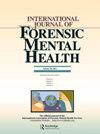暴力风险评估工具与土著人民:殖民主义是SAVRY风险评级的根本原因
IF 0.9
4区 医学
Q3 CRIMINOLOGY & PENOLOGY
International Journal of Forensic Mental Health
Pub Date : 2023-02-15
DOI:10.1080/14999013.2023.2178554
引用次数: 2
摘要
摘要暴力风险评估工具在世界各地被用于犯罪者,以确定可能导致他们犯罪的风险因素。这些工具可以对人民的自由产生重大影响。暴力风险评估工具也用于加拿大司法系统中比例过高的土著人。这些风险评估工具的一个主要问题是,它们没有使用殖民主义的视角来理解暴力的潜在机制。以青年暴力风险结构化评估(SAVRY)为例,我们研究了殖民主义如何构成风险和保护评级的基础。殖民主义增加了土著青年在SAVRY中某些风险因素评分较高的可能性。减少土著人比例过高的新干预措施包括解决暴力风险和保护因素背后的殖民因素。鉴于殖民主义是风险评估工具得分的基础,服务提供商需要在其服务制定中将风险评级与殖民主义联系起来,仔细考虑文化相关因素,并提供专门针对殖民主义的干预和支持。还提出了包括土著社区参与在内的未来研究建议。文中举例说明了一个简短的案例分析、文化表述和处理建议。本文章由计算机程序翻译,如有差异,请以英文原文为准。
Violence Risk Assessment Tools and Indigenous Peoples: Colonialism as an Underlying Cause of Risk Ratings on the SAVRY
Abstract Violence risk assessment tools are used around the world with people who have committed crimes to determine the risk factors that may have contributed to their offending. These tools can carry great consequences for people’s liberty. Violence risk assessment tools are also used with Indigenous people who are overrepresented in the Canadian justice system. A major issue with these risk assessment tools is that they do not use a colonial lens to understand the underlying mechanisms of violence. Using the Structured Assessment of Violence Risk in Youth (SAVRY) as an example, we examined how colonialism underlies risk and protective ratings. Colonialism increases the probability that Indigenous youth will be rated higher on some risk factors on the SAVRY. Novel interventions to reduce Indigenous overrepresentation include addressing the colonial factors behind violence risk and protective factors. Given that colonialism underlies scores on risk assessment tools, service providers need to link risk ratings to colonialism in their service formulations, carefully attend to culturally relevant factors, and provide interventions and support that specifically address colonialism. Suggestions for future research that include Indigenous community involvement are also provided. A short case analysis, cultural formulation and treatment suggestions are provided as an illustration.
求助全文
通过发布文献求助,成功后即可免费获取论文全文。
去求助

 求助内容:
求助内容: 应助结果提醒方式:
应助结果提醒方式:


